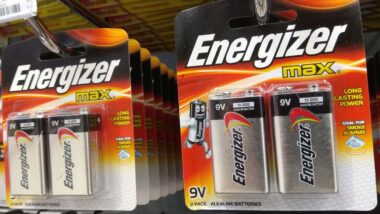Top Class Actions’s website and social media posts use affiliate links. If you make a purchase using such links, we may receive a commission, but it will not result in any additional charges to you. Please review our Affiliate Link Disclosure for more information.

According to the testimony, many of the current repairs have used an inflator called a “batwing” inflator. Recent investigations into the original cause of the exploding airbags found the batwing style inflator may be behind the Takata airbag explosions in addition to high concentrations of ammonium nitrate that can propel metal through the vehicle during an explosion.
Additionally, Takata revealed at the June 15th Congressional hearing that it uses a forceful chemical mixture using ammonia nitrate to inflate the bags during a crash. Even though the mixture is unstable with frequent temperature changes and in humid conditions, making it susceptible to combustion, Takata plans to continue to use the mixture.
To make the propellant mix safer, Takata more recently has added desiccant, a material that gathers up and holds moisture chemically and should extend the lifetime of the inflator by two to three times.
What is Wrong with the Takata Airbags?
More than 30 million vehicles in the United States made by 10 different automakers have been recalled to replace defective airbags.
The airbags, manufactured by Takata, were mostly installed in cars from model year 2002 through 2008, although it has been expanded through 2014 in some cases. Some of those airbags could deploy explosively, injuring or killing car occupants.
At the heart of the problem is the airbag’s inflator, a metal cartridge loaded with propellant wafers, which, in some cases, has ignited with explosive force. If the inflator housing ruptures in a crash, metal shards from the airbag can be sprayed throughout the passenger cabin — a potentially disastrous outcome from a supposedly life-saving device.
Six deaths and more than 100 injuries have been linked to defective airbag inflators that ruptured.
Takata plans to replace all batwing inflator airbags, but there is no word on whether Takata also plans to replace all of the original ammonium nitrate canisters with the new design.
Do YOU have a legal claim? Fill out the form on this page now for a free, immediate, and confidential case evaluation. The airbag injury attorneys who work with Top Class Actions will contact you if you qualify to let you know if an individual airbag lawsuit or Takata airbag class action lawsuit is best for you. [In general, airbag injury lawsuits are filed individually by each plaintiff and are not class actions.] Hurry — statutes of limitations may apply.
ATTORNEY ADVERTISING
Top Class Actions is a Proud Member of the American Bar Association
LEGAL INFORMATION IS NOT LEGAL ADVICE
Top Class Actions Legal Statement
©2008 – 2024 Top Class Actions® LLC
Various Trademarks held by their respective owners
This website is not intended for viewing or usage by European Union citizens.
Get Help – It’s Free
Join a Free Takata Airbag Class Action Lawsuit Investigation
If you or someone you know were injured or killed by a Takata airbag explosion, you may have a legal claim. If you qualify, an attorney will contact you to discuss the details of your potential case at no charge to you.
NOTE: Do not fill out this form if you/your loved one were not injured or killed. You do not qualify and will not be contacted.
Oops! We could not locate your form.












